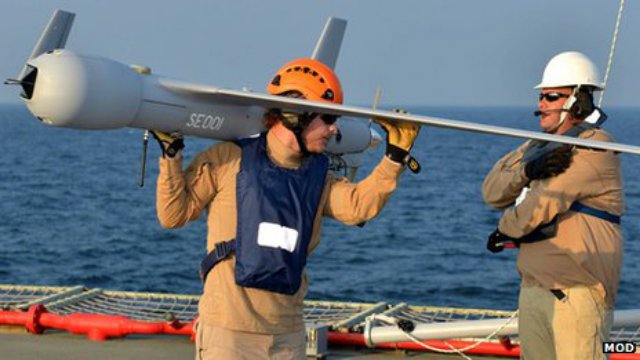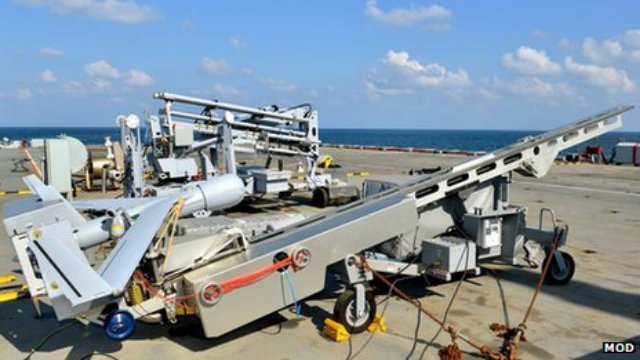The UK Royal Navy’s first squadron of unmanned aircraft has been formed in Cornwall. The 700X Naval Air Squadron has been established at RNAS Culdrose, Helston, to fly the pilotless aircraft. The Royal Navy said the establishment of the new squadron would pave the way for increased use of similar aircraft in the future.
The pilotless ScanEagle aircraft can stay in the air for 18 hours and beam video into a ship’s operation room.
Lt Cdr Al Rogers, commanding officer of 700X Naval Air Squadron said: “This is a fantastic job. It’s the Fleet Air Arm’s first step into the world of remotely piloted air systems and we are looking to develop our tactics and embrace this new technology ensuring the Royal Navy remains a world leader in aviation at sea – whether manned or unmanned.”
The aircraft is launched by a catapult on a 14ft (4.27m) ramp.
Since being introduced to ships deployed east of Suez at the beginning of 2014, ScanEagle has clocked up nearly 1,500 hours on missions.
It was brought in to provide eyes for the Royal Navy’s mine-hunting force in the Gulf, but has been used in counter-piracy and counter-smuggling operations thanks to its ability to monitor boarding operation or suspicious vessels.
The new squadron will act as parent unit for the flights deployed on Royal Navy vessels and will try out any future unmanned aircraft which the Fleet Air Arm decides to invest in.
The 700X Naval Air Squadron will be one of the smallest units in the Royal Navy with 12 personnel but that number could double by the end of 2015.
The Boeing Insitu ScanEagle is currently being flown from HMS Kent, which has just arrived in the Arabian Sea to begin counter-piracy patrols.
Photos: ScanEagle unmanned aircraft and launcher onboard the RFA Cardigan – MOD
Source: BBC


